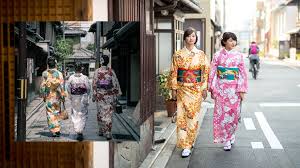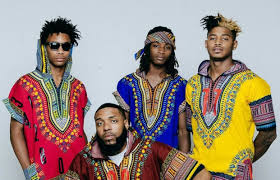Traditional clothing is more than just fabric; it’s a vibrant expression of culture, history, and identity. Each piece of traditional attire tells a story about the people and the places it originates from. From the intricate designs of Japanese kimonos to the colorful patterns of African kente cloth, traditional clothing around the world reflects a rich tapestry of human heritage. In this article, we will explore some fun and fascinating facts about traditional clothing from various cultures, highlighting their unique features and historical significance.
1. Kimono: The Timeless Elegance of Japan

1.1. Historical Roots
- Origins: The kimono, Japan’s most iconic traditional garment, has a history dating back to the Heian period (794-1185 AD). Originally, kimonos were worn as everyday attire but have evolved into ceremonial and formal wear over time.
- Design Evolution: Traditional kimonos feature long sleeves and a wrap-around design secured with an obi (a wide belt). The styles and colors of kimonos have evolved to reflect changes in fashion, seasonality, and social status.
1.2. Symbolism and Use
- Seasonal Colors: Kimono colors often reflect the seasons. For example, light and pastel colors are worn in spring, while deeper hues are used in winter. Patterns may include seasonal motifs like cherry blossoms and maple leaves.
- Special Occasions: Kimonos are worn on significant occasions such as weddings, tea ceremonies, and traditional festivals. Each occasion has specific kimono styles and accessories associated with it.
2. Sari: The Graceful Attire of India
2.1. Cultural Significance
- Historical Background: The sari is a traditional Indian garment with a history that spans over 5,000 years. It is considered one of the oldest forms of clothing in the world, with references found in ancient texts and artworks.
- Versatility: A sari is a long piece of cloth, usually around six to nine yards in length, draped elegantly around the body. The way it is draped can vary significantly by region, showcasing diverse regional styles.
2.2. Regional Variations
- Different Styles: India boasts a wide variety of sari styles. For instance, the Banarasi sari from Varanasi is known for its intricate gold and silver brocade work, while the Kanjeevaram sari from Tamil Nadu is famous for its vibrant colors and luxurious silk.
- Occasions and Ceremonies: Saris are worn for everyday wear as well as special occasions like weddings, festivals, and religious ceremonies. Each region has its own unique draping style and traditional embellishments.
3. Kilt: The Scottish Symbol of Heritage
3.1. Historical Origins
- Ancient Roots: The kilt, a knee-length skirt-like garment with pleats at the back, is closely associated with Scottish heritage. It has been a symbol of Scottish identity for centuries, with its origins traced back to the 16th century.
- Tartan Patterns: Kilts are made from tartan fabric, which features a distinctive pattern of crisscrossed horizontal and vertical bands. Each tartan design is associated with specific Scottish clans, reflecting family heritage and regional identity.
3.2. Modern Usage
- Formal and Informal: While kilts are traditionally worn for formal occasions like weddings and ceremonial events, they have also found their way into casual wear and contemporary fashion. Modern kilts are available in various fabrics and designs, catering to diverse tastes.
- Cultural Festivals: The kilt is often worn during cultural festivals such as the Highland Games, where traditional Scottish music, dancing, and athletic events are celebrated.
4. Dashiki: The Vibrant Garment of West Africa

4.1. Traditional Design
- Origins and Features: The dashiki is a colorful garment worn in West Africa, characterized by its loose fit, elaborate designs, and decorative embroidery. It typically features a V-neck and can be worn by both men and women.
- Cultural Significance: The dashiki is a symbol of pride and cultural heritage. Its vibrant colors and patterns often reflect traditional African art and motifs, celebrating the wearer’s ethnic background.
4.2. Modern Adaptations
- Fashion Statements: In recent years, the dashiki has gained popularity beyond West Africa, with designers incorporating its distinctive patterns into modern fashion. It is worn for various occasions, including festivals, parties, and cultural events.
- Influence on Global Fashion: The dashiki’s impact on global fashion can be seen in the rising trend of incorporating African-inspired prints and designs into contemporary clothing.
5. Huipil: The Traditional Blouse of Mesoamerica
5.1. Cultural Importance
- Historical Background: The huipil is a traditional Mexican blouse worn by indigenous women in Mesoamerica. It has been a part of indigenous culture for centuries, with its origins tracing back to pre-Columbian civilizations.
- Intricate Designs: Huipils are known for their intricate handwoven designs, which often include symbolic patterns and vibrant colors. Each design reflects the wearer’s community, personal stories, and cultural beliefs.
5.2. Regional Variations
- Different Styles: The huipil varies in style and design across different regions of Mexico. For example, the huipil from Oaxaca is renowned for its detailed embroidery, while the huipil from Chiapas features distinctive woven patterns.
- Ceremonial Wear: Huipils are often worn during important cultural ceremonies, including weddings, religious festivals, and traditional dances. They are cherished as a symbol of cultural heritage and craftsmanship.
6. Poncho: The Versatile Garment of the Andes
6.1. Historical Roots
- Origins: The poncho is a traditional garment originating from the Andean region of South America. It has been worn by indigenous peoples for thousands of years, with historical evidence dating back to pre-Columbian times.
- Design and Function: The poncho is a simple yet functional garment, typically made from woven wool or cotton. It features a single large opening for the head and drapes over the shoulders, providing warmth and protection against the elements.
6.2. Modern Adaptations
- Fashion and Function: While traditionally used for practical purposes, the poncho has evolved into a fashionable garment worn around the world. Modern ponchos are available in various styles, materials, and designs, blending traditional elements with contemporary fashion trends.
- Cultural Festivals: Ponchos are often featured in cultural festivals and events, showcasing traditional Andean craftsmanship and celebrating the garment’s historical significance.
7. Cheongsam: The Elegant Dress of China

7.1. Traditional Design
- Origins and Features: The cheongsam, also known as qipao, is a traditional Chinese dress with a history dating back to the Qing dynasty (1644-1912). It is characterized by its form-fitting design, high collar, and intricate embroidery.
- Cultural Significance: The cheongsam is a symbol of grace and elegance in Chinese culture. Its design and details often reflect traditional Chinese aesthetics and craftsmanship.
7.2. Modern Fashion
- Evolution: Over time, the cheongsam has evolved from a formal garment to a versatile piece of clothing. It is worn for various occasions, including weddings, cultural celebrations, and formal events.
- Global Influence: The cheongsam’s influence can be seen in global fashion, with designers incorporating its elegant lines and designs into modern clothing collections.
8. Conclusion
Traditional clothing around the world offers a captivating glimpse into diverse cultures and histories. Each garment, from the kimono to the dashiki, reflects unique cultural values and artistic traditions. As we explore these fascinating pieces of attire, we gain a deeper appreciation for the richness of human heritage and the stories woven into every stitch. Embracing and celebrating traditional clothing not only honors cultural diversity but also connects us to the timeless traditions and values that shape our world.

